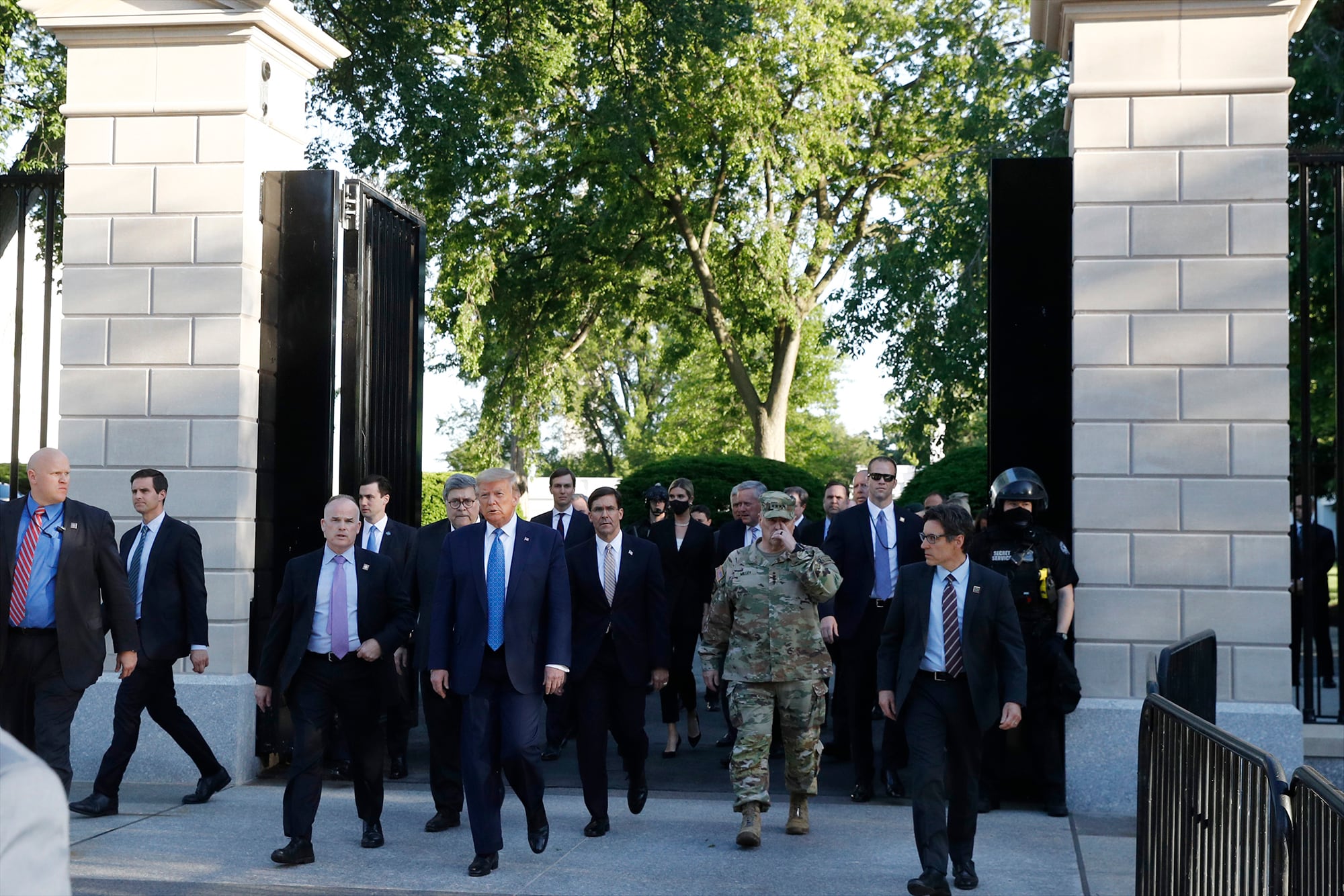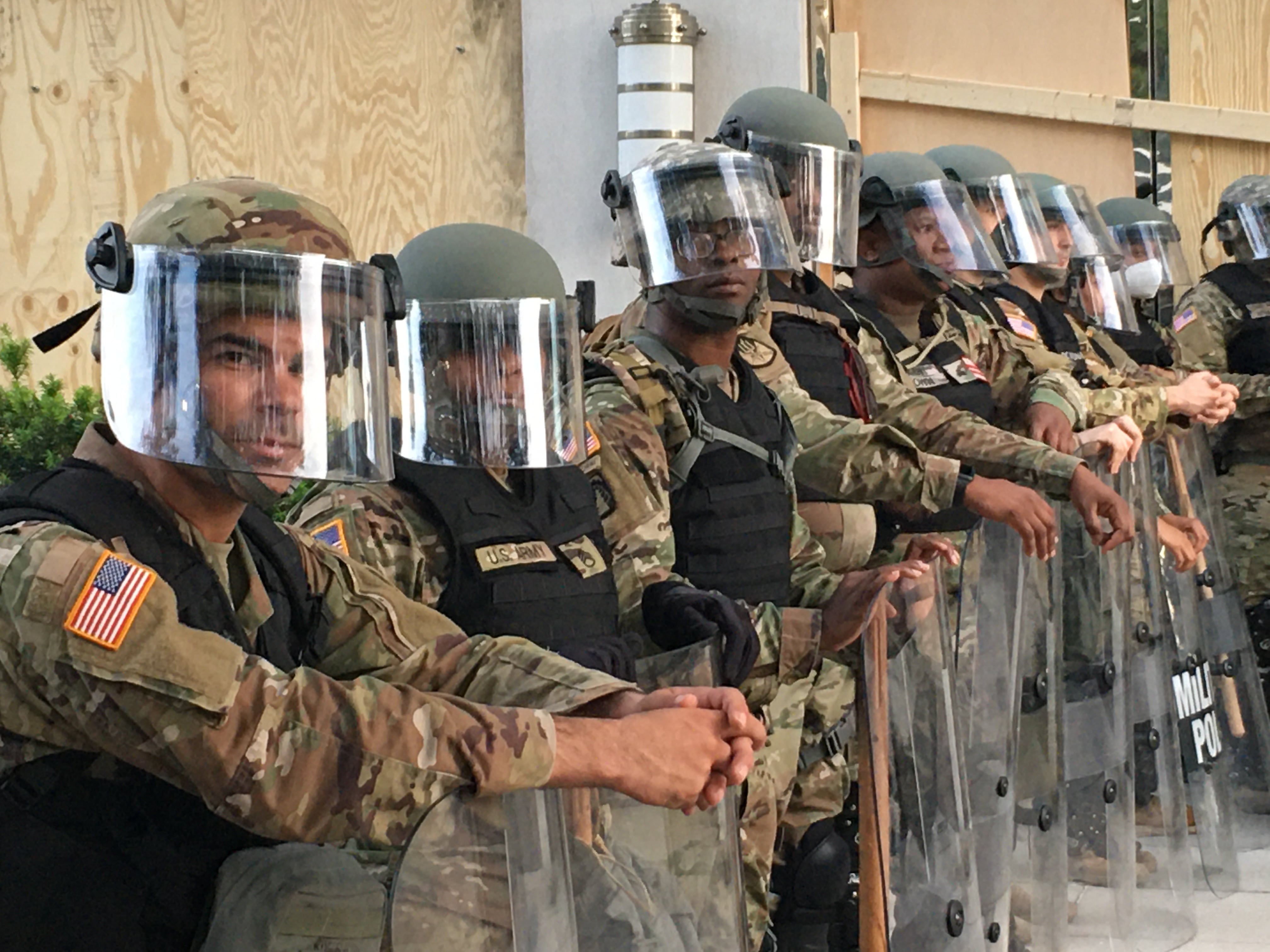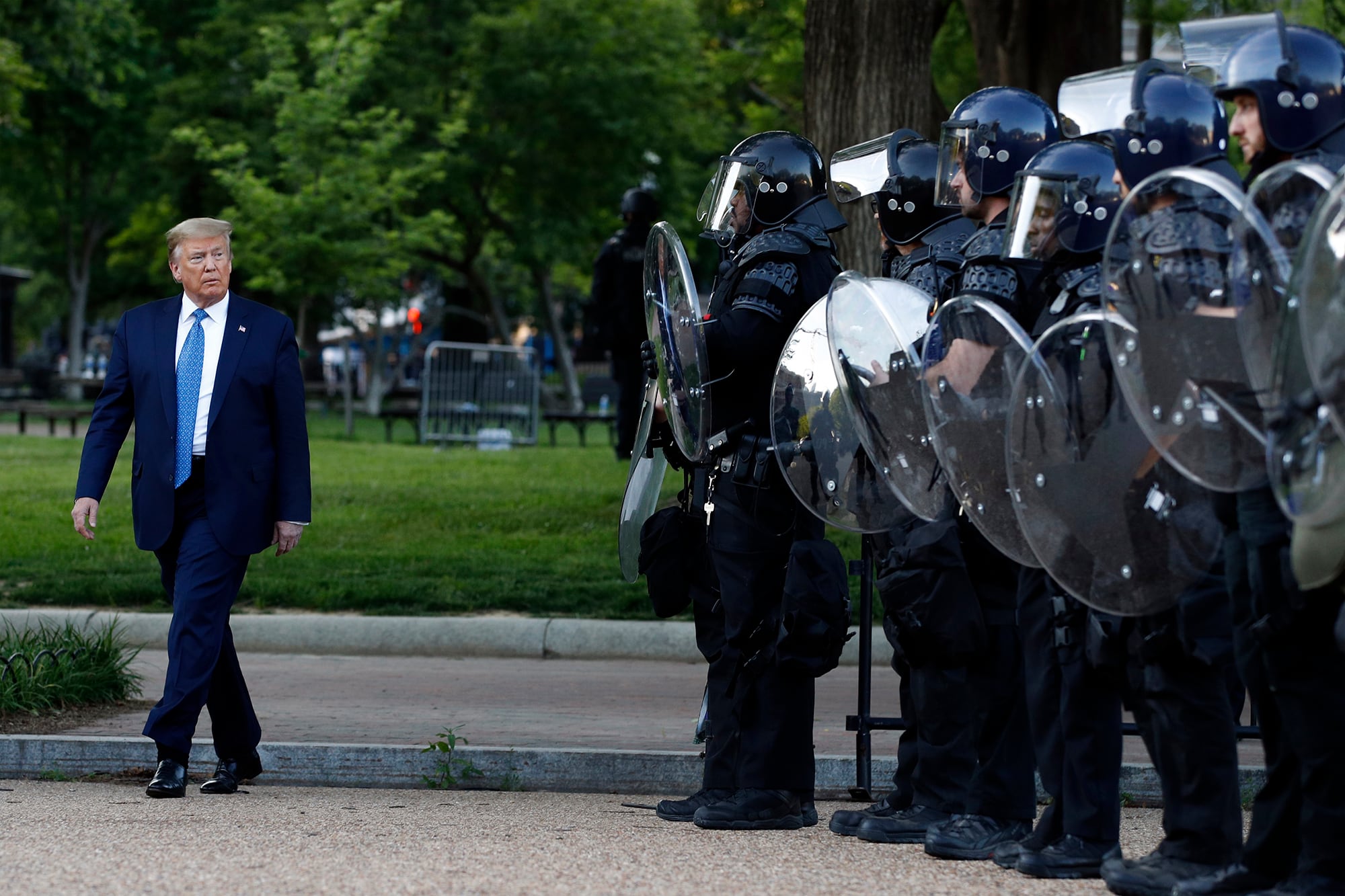WASHINGTON — Defense Secretary Mark Esper is facing the most politically charged crisis of his tenure, criticized for calling protester-filled streets a military “battle space” and accused of failing to keep the military out of politics.
At the same time, 11 months into the job, Esper is seeing his relationship with President Donald Trump tested by the storm over the police killing of George Floyd and Esper’s urging of caution in the use of military force.
Esper, an Army veteran and former Army secretary, has sometimes subtly pushed back on Trump, including when the president intervened in the military justice system last year to pardon two soldiers accused of war crimes. But he has stayed closely aligned with the president’s national security policies and kept in his good graces.
On Wednesday, Esper publicly distanced himself from Trump’s threats to use the full force of the military to quell street protests around the country, emphatically arguing against invoking the two-centuries-old Insurrection Act, which would allow Trump to use active-duty troops in a law enforcement role.
The possibility of using the Insurrection Act, which has not been invoked since the 1992 rioting in Los Angeles, had been discussed in the White House but never explicitly proposed publicly by Trump. The president has suggested he would use all available military force, however, if state governors couldn’t stop the violence.
The Insurrection Act should be invoked, Esper told reporters, “only in the most urgent and dire of situations.” He declared, “We are not in one of those situations now.” Aides emphasized later that Esper is not opposed to using the military to support federal and state law enforcement agencies when asked.
In another sign of the unsettled thinking on troop use, Esper on Wednesday overturned an earlier Pentagon decision to send a couple hundred active-duty soldiers home from the Washington area. They had been flown in earlier in the week from Fort Bragg, North Carolina, as a backup force in the event that street violence escalated. Army Secretary Ryan McCarthy told The Associated Press that the reversal came after Esper attended a meeting at the White House, and after other internal Pentagon discussions, but it was not immediately clear whether Esper met with Trump or what triggered the reversal.
Asked Wednesday about Esper’s standing with Trump, the White House press secretary, Kayleigh McEnany, offered something less than a ringing endorsement. “If he loses confidence in Secretary Esper, I’m sure you all will be the first to know.” Pressed on this point, she added: “As of right now, Secretary Esper is still Secretary Esper and should the president lose faith, we will all learn about that in the future.”

The trouble for Esper came into fuller focus on Monday as he strolled out of the White House in a Trump entourage that made its way to nearby St. John’s Episcopal Church for a photo op featuring Trump hoisting a Bible. Afterward, critics pounced on Esper, saying he had allowed himself to be used as a political prop.
James Miller, a top Pentagon policy official during the Obama administration, accused Esper of violating his oath of office by failing to oppose the use of police force to clear Trump’s path to the church. The clearing operation violated the protesters’ First Amendment right to assemble peacefully, Miller said.
Esper said he was not aware of the police clearing operation and did not know he was heading into a photo op. He said he understood he was going to view damage at the church and to interact with National Guard troops in the area. He was accompanied by Gen. Mark Milley, chairman of the Joint Chiefs of Staff.
RELATED

Miller credited Esper with having served honorably for many years in the military and in government but questioned why Esper had not drawn the line at participating in Monday night’s walk.
“If last night’s blatant violations do not cross the line for you, what will?” Miller asked in a letter published in The Washington Post in which he informed Esper he was resigning from the advisory Defense Science Board.
At a Pentagon news conference, Esper defended his actions and insisted he understands his role. A secretary of defense traditionally is among the least political of the Cabinet secretaries because the military he or she oversees is trained to stay out of politics and to be loyal to the Constitution, not to a president.
“I do everything I can to stay apolitical,” Esper said.
RELATED

Esper has come under fire in some quarters for having said on a conference call with state governors that security forces need to dominate the “battle space” occupied by protesters and looters. Critics accused him of militarizing the crisis by suggesting that Americans are treated like enemies.
In his remarks to reporters, Esper said his point was misconstrued, and that he meant his comment as a compliment to those governors who have successfully used the National Guard to enable peaceful protests to proceed.
“In retrospect, I would use different wording so as not to distract from the more important matters at hand,” he said.
Esper’s predecessor, retired Gen. Jim Mattis, who resigned in December 2018 out of frustration with Trump’s policies, issued a public rebuke of Trump on Wednesday and took a swipe at Esper without citing him by name.
“We must reject any thinking of our cities as a ‘battle space’ that our uniformed military is called upon to ‘dominate,’” Mattis wrote, adding, “Keeping public order rests with civilian state and local leaders who best understand their communities and are answerable to them.”
Esper is no stranger to Washington politics. He worked on Capitol Hill in senior staff positions in both the House and the Senate and was defense giant Raytheon Co.'s chief Washington lobbyist before he became Army secretary in 2017. He became Trump’s second Pentagon chief after his first, retired Gen. Jim Mattis, resigned in December 2018 in a policy dispute.
Milley, the Joint Chiefs chairman, also has taken heat from critics for his role in managing the response to the protests. However, the chairman of the Senate Armed Services Committee, Sen. James Inhofe, R-Okla., defended Milley, whom he quoted as saying he agreed with Esper’s opposition to invoking the Insurrection Act.
Associated Press writers Lolita C. Baldor, Kevin Freking and Lisa Mascaro contributed to this report.



